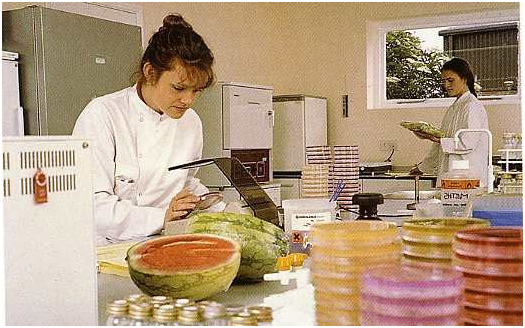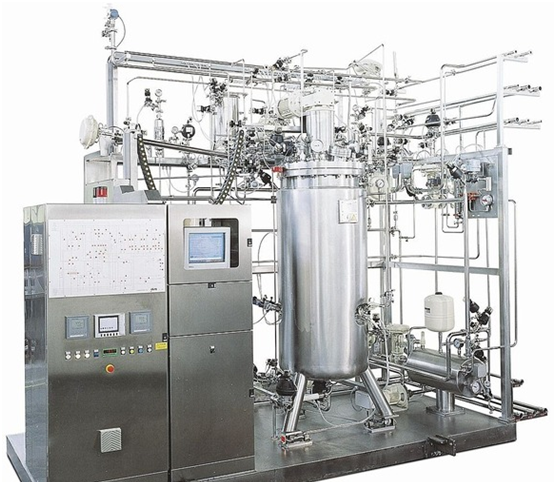Microorganisms inclusive of bacteria and fungi play tremendous roles in sustainable agriculture. And these organisms used for food production including bacteria and fungi have been found to improve the health status of the consumers. Due to the prevailing shortage of food or food scarcity in some parts of the world; microbes are currently being applied to increase crop yield, improve the fertility of the soil and also to increase the growth of crop plants.
Rhizobium species and mycorrhizae are typical examples of microbial interactions that have the potential to transform and ensure food sustainability across the globe. Several fermented food products including fermented milk and beverages are produced through the fermentative action of microorganisms including mesophiles, thermophiles, lactic acid bacteria (LAB) and yeasts and moulds.
For example, acidophilus milk contains Lactobacillus acidophilus (a probiotic organism); and this bacterium improves the general health of the consumers by altering the intestinal microflora of the GIT. This activity of L. acidophilus in the GIT may help control the problem of colon cancer. Thermophilic-fermentations carried out by thermophiles at about 45°C are used in the production of fermented foods like yoghurt.
Cultured buttermilk and sour cream like vinegar can be produced from the microbial activity of mesophilic bacteria at temperatures lower than 45°C. These organisms produce mesophilic acids that cause protein denaturation. Microbes are also employed in the production of several alcoholic and non-alcoholic beverages such as wines, beer and champagne. Fermented milk products containing Bifidobacterium species improve lactose tolerance in individuals experiencing lactose-intolerance.
Such fermented milk products also possess anticancer activity; and they help reduce serum cholesterol levels, assist calcium absorption, and promote the synthesis of B-complex vitamins. Such fermented milk products are usually recommended for patients passing through any of these clinical conditions. Aerobic yeasts (e.g. Saccharomyces cerevisiae) fermentation is used to produce carbon dioxide with minimal alcohol production in dough, and this contributes to the rising of dough – a significant process in bread production.
Microbes also add or improve the taste and flavours of fermented food products through their fermentation activity. The addition of microorganisms to the diet (as microbial dietary adjuvants) in order to provide health benefits beyond basic nutritive value is a key aspect of improving the gut flora and the general health of the individual. Probiotics is one example of microbial dietary adjuvants used medically to improve the health of the gut.
References
Bushell M.E (1998). Application of the principles of industrial microbiology to biotechnology (ed. Wiseman, A.) Chapman and Hall, New York.
Byong H. Lee (2015). Fundamentals of Food Biotechnology. Second edition. Wiley-Blackwell, New Jersey, United States.
Clark D.P and Pazdernik N (2010). Biotechnology. First edition. Elsevier Science and Technology Books, Amsterdam, Netherlands.
Farida A.A (2012). Dairy Microbiology. First edition. Random Publications. New Delhi, India.
Frazier W.C, Westhoff D.C and Vanitha N.M (2014). Food Microbiology. Fifth edition. McGraw-Hill Education (India) Private Limited, New Delhi, India.
Guidebook for the preparation of HACCP plans (1999). Washington, DC, United States Department of Agriculture Food Safety and Inspection Service. Accessed on 20th February, 2015 from: http://www.fsis.usda.gov
Hayes P.R, Forsythe S.J (1999). Food Hygiene, Microbiology and HACCP. 3rd edition. Elsevier Science, London.
Hussaini Anthony Makun (2013). Mycotoxin and food safety in developing countries. InTech Publishers, Rijeka, Croatia. Pp. 77-100.
Jay J.M (2005). Modern Food Microbiology. Fourth edition. Chapman and Hall Inc, New York, USA.
Lightfoot N.F and Maier E.A (1998). Microbiological Analysis of Food and Water. Guidelines for Quality Assurance. Elsevier, Amsterdam.
Nduka Okafor (2007). Modern industrial microbiology and biotechnology. First edition. Science Publishers, New Hampshire, USA.
Roberts D and Greenwood M (2003). Practical Food Microbiology. Third edition. Blackwell publishing Inc, USA.
Discover more from #1 Microbiology Resource Hub
Subscribe to get the latest posts to your email.



